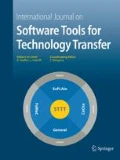Abstract
The design and functional complexity of medical devices have increased during the past 50 years, evolving from the use of a metronome circuit for the initial cardiac pacemaker to functions that include electrocardiogram analysis, laser surgery, and intravenous delivery systems that adjust dosage based on patient feedback. As device functionality becomes more intricate, concerns arise regarding efficacy, safety, and reliability. It thus becomes imperative to adopt a standard or methodology to ensure that the possibility of any defect or malfunction in these devices is minimized. It is with these facts in view that regulatory bodies are interested in investigating mechanisms to certify safety-crictical medical devices. These organizations advocate the use of formal methods techniques to evaluate safety-critical medical systems. However, the use of formal methods is keenly debated, with most manufacturers claiming that they are arduous and time consuming.
In this paper we describe our experience in analyzing the requirements documents for the computer-aided resuscitation algorithm (CARA) designed by the Resuscitative Unit of the Walter Reed Army Institute of Research (WRAIR). We present our observations from two different angles – that of a nonbeliever in formal methods and that of a practitioner of formal methods. For the former we catalog the effort required by a novice user of formal methods tools to carry out an analysis of the requirements documents. For the latter we address issues related to choice of designs, errors in discovered requirements, and the tool support available for analyzing requirements .
Similar content being viewed by others
References
Barroca LM, McDermid JA (1992) Formal methods: use and relevance for the development of safety critical systems. Comput J 35(6):579–599
Bengtsson J, Larsen KG, Larsson F, Pettersson P, Yi W (1995) UPPAAL – a tool suite for automatic verification of real-time systems. In: Proceedings of the 4th DIMACS workshop on verification and control of hybrid systems, New Brunswick, NJ, 22–24 October 1995
Bengtsson J, Larsen KG, Larsson F, Pettersson P, Yi W, Weise C (1998) New generation of UPPAAL. In: Proceedings of the international workshop on software tools for technology transfer, Aalborg, Denmark, 12–13 July 1998
Bowen JP, Stavridou V (1993) Safety-critical systems, formal methods and standards. IEE/BCS Softw Eng J 8(4):189–209
Coleman T (2001) Basic physiological concepts. http://physiology.umc.edu/WORKSHOP/BASCPHYS/BASCPHYS.HTM
FDA, Center for Devices and Radiological Health (1998) Guidance for FDA reviewers and industry guidance for the content of premarket submissions for software contained in medical devices, 29 May. http://www.fda.gov/cdrh/ode/57.html
FDA, Center for Devices and Radiological Health (1999) Guidance for industry, FDA reviewers and compliance on off-the-shelf software use in medical devices, 9 September. http://www.fda.gov/cdrh/ode/guidance/585.html
FDA, Center for Devices and Radiological Health (2002) General principles of software validation; final guidance for industry and FDA staff, 11 January. http://www.fda.gov/cdrh/comp/guidance/938.html
Glass RL (1980) Software vs. hardware errors. IEEE Comput 23(12):pages
Holzmann GJ (1997) The model checker SPIN. IEEE Trans Softw Eng 23(5):279–295
Iyer RK, Velardi P (1985) Hardware-related software errors: measurement and analysis. IEEE Trans Softw Eng 11(2):223–231
Larsen KG, Pettersson P, Yi W (1997) UPPAAL in a nutshell. Int J Softw Tools Technol Transfer 1:134–152
Leveson N, Turner CS (1993) An investigation of the Therac-25 accidents. IEEE Comput 25(7):18–41
MathWorks, Inc (1992) SIMULINK: a program for simulting dynamical systems. http://www.mathworks.com
Author information
Authors and Affiliations
Corresponding author
Rights and permissions
About this article
Cite this article
Jetley, R., Carlos, C. & Iyer, S. A case study on applying formal methods to medical devices: computer-aided resuscitation algorithm. STTT 5, 320–330 (2004). https://doi.org/10.1007/s10009-003-0137-2
Published:
Issue Date:
DOI: https://doi.org/10.1007/s10009-003-0137-2




